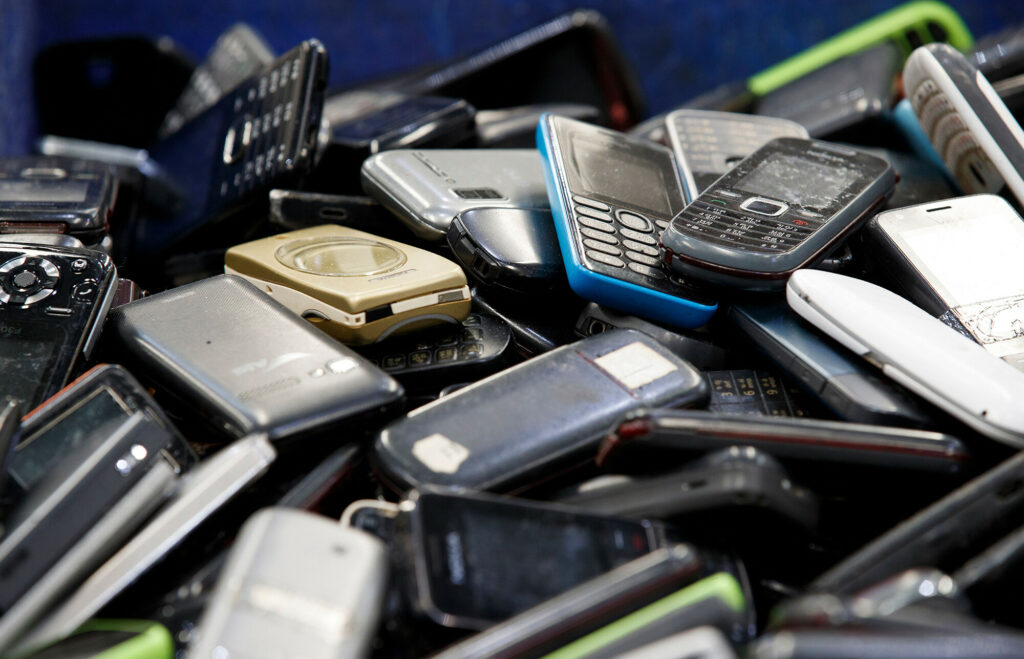Want to help the climate crisis? Don’t toss your old iPhone, fix it

Those materials get transported to factories where they’re refined, often using high temperatures and significant energy, and turned into components like batteries, wires, logic boards and motors. The components are then transferred by fossil fuel-powered vehicles to yet more factories to be assembled into complete devices, before being The growing “right-to-repair” movement could help. Right-to-repair advocates, including Apple (AAPL) co-founder Steve Wozniak, are calling for laws that would require device makers to release the tools, parts and repair manuals necessary to allow consumers to have their products fixed by independent shops — or to do it themselves. If consumers could more easily repair devices, advocates say, they wouldn’t have to replace them as frequently, reducing reliance on the resource-intensive production process and cutting down on electronic waste. And it’s not just smartphones: Right-to-repair could make it easier to fix everything from tablets to tractors. Regulators are starting to take notice. US President Joe Biden recently directed the Federal Trade Commission to issue rules preventing manufacturers from imposing restrictions that make it hard to repair devices. A week later, the FTC committed to investigating repair restrictions that may be illegal under federal antitrust and consumer protection laws. European regulators, meanwhile, have been out front on right-to-repair, implementing rules earlier this year that require manufacturers of devices like washing machines and TV displays to make parts and repair manuals available to third-parties for repairs. Right-to-repair advocates hope the recent regulatory attention will be the momentum needed to finally push manufacturers to make repairs accessible more broadly. For the climate, the push can’t come soon enough. The world’s scientists concluded in August that it is “unequivocal” humans have caused the climate crisis, and confirmed that widespread and irreversible changes have already occurred. “If we can’t repair our stuff, the consequences are we throw a lot more away,” Gay Gordon-Byrne, executive director of the Repair Association, a coalition fighting for the right to repair, told CNN. “We can’t cope with the volume anymore … We’re swimming in products that we can no longer recycle.” The production problem The supply chain for consumer electronics is global and complex, making it hard to quantify the full scope of its environmental impact, experts say. But data that some companies make public can help paint the picture: With the iPhone 13, for example, 81% of the 64 kilograms of carbon emissions generated by a single device comes from the production process alone, before it is transported to shelves, according to Apple. On an individual scale, that’s not much; it’s about the same as a 130-mile car trip from Los Angeles to San Diego. But multiply that by the hundreds of millions of iPhones sold each year and it adds up quickly. Then, apply a similar calculation to the countless other personal devices we use each day — laptops, desktops, tablets, smart watches, smart speakers, smart headphones and so on — and you begin to get a sense of the carbon footprint of manufacturing new consumer electronics. “Everything that happens before the device reaches you is very materially and energetically intensive — that’s where the most greenhouse gasses are emitted and where the most violent ecological transformation takes place,” Stratton said. Some device makers have been working to increase their use of more sustainable materials in production. Apple, for example, highlighted in its recent product launch event the recycled aluminum and other repurposed components used in its new devices, and HP (HPQ) has talked about using plastics that might otherwise end up in the ocean to build laptops. The total mass of e-waste is declining as devices get smaller, according to a 2020 Yale study published in the Journal of Industrial Ecology. But experts worry that with the coming “internet of things” revolution — where everything from watches to refrigerators are becoming consumer electronic devices — the amount of waste could tick back up. “The Internet of Things is terrifying to every person in my job, because we’re just seeing piles and piles of electronic waste coming,” said LaGrange, who has been advocating for right-to-repair for nearly seven years. “The fact that we are still having this conversation is surprising,” she said. “What was encouraging about President Biden’s work … is that we’ve known that repairs are important for years, they’re helpful for the people, for our planet, for local jobs, for all things digital equity. So there was something really encouraging about that being seen. But at the same time, there are still a lot of restrictions.”



